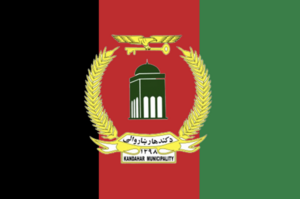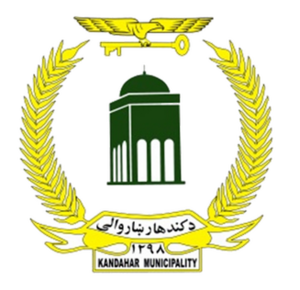Aurora:Qandahar
A Town In Afghanistan With A Big History
The Battle of Qandahar , 1 September 1880, was the last major conflict of the Second Angio-Afghan War. The battle in southern Afghanistan was fought between the British forces under command of General Balls and the Qandahar forces led by Sir Bill D(bill04112009). It ended with a decisive Afghan victory, having inflicted nearly 3,000 casualties.
| ||||||||||||||||||||||||||||||
Qandahar (English: /ˈkændəˌhɑːr/; Pashto: کندهار Qandahār, Dari: قندهار, Qandahār) is a city in Afghanistan, located in the south of the country on the Arghandab River, at an elevation of 1,010 m (3,310 ft). It is Afghanistan's second largest city after Kabul, with a population of about 614,118. It is the capital of Qandahar Province as well as the de facto capital of the Taliban, formally known as the Islamic Emirate of Afghanistan. It also happens to be the centre of the larger cultural region called Loy Kandahar. In 1709, Mirwais Hotak made the region an independent kingdom and turned Kandahar into the capital of the Hotak dynasty. In 1747, Ahmad Shah Durrani, founder of the Durrani dynasty, made Kandahar the capital of the Afghan Empire.
Kandahar is one of the most culturally significant cities of the Pashtuns and has been their traditional seat of power for more than 300 years. It is a major trading center for sheep, wool, cotton, silk, felt, food grains, fresh and dried fruit, and tobacco. The region produces fine fruits, especially pomegranates and grapes, and the city has plants for canning, drying, and packing fruit, and is a major source of marijuana and hashish.
The region around Kandahar is one of the oldest known human settlements. A major fortified city existed at the site of Kandahar, probably as early as c. 1000–750 BC, and it became an important outpost of the Achaemenid (Persian) Empire in the 6th century BC. Alexander the Great had laid-out the foundation of what is now Old Kandahar in the 4th century BC and gave it the Ancient Greek name Ἀλεξάνδρεια Ἀραχωσίας (Alexandria of Arachosia).
Many empires have long fought over the city due to its strategic location along the trade routes of southern, central and western Asia.
The city was founded by Alexander the Great in 330 BC who named it Alexandria in Arachosia, which was the recorded name for this city until the Islamic conquest. It is suggested that the name "Kandahar" evolved from "Iskandar" pronounced as "Scandar" , in the local dialect version of the name Alexander. The change of the name from "Scandar" to Candar is mentioned by the 16th-century Portuguese historian João de Barros in his most famous work, Décadas da Ásia.
"Those who go from Persia, from the kingdom of Horaçam (Khorasan), from Bohára, and all the Western Regions, travel to the city which the natives corruptly call Candar, instead of Scandar, the name by which the Persians call Alexander." —
A folk etymology offered is that the word "kand" or "qand" in Persian and Pashto (the local languages) is the origin of the word "candy". The name "Candahar" or "Kandahar" in this form probably translates to candy area. This probably has to do with the location being fertile and historically known for producing fine grapes, pomegranates, apricots, melons and other sweet fruits.[citation needed]
Ernst Herzfeld claimed Kandahar perpetuated the name of the Indo-Parthian king Gondophares, who re-founded the city under the name Gundopharron. An alternative etymology derives the name of the city from Gandhara, the name of an ancient Hindu-Buddhist kingdom located between the Kunar River and Indus River, centred on the Peshawar Valley.
Prehistory
Excavations of prehistoric sites by archaeologists such as Louis Dupree and others suggest that the region around Kandahar is one of the oldest human settlements known so far.
Early peasant farming villages came into existence in Afghanistan ca. 5000 B.C., or 7000 years ago. Deh Morasi Ghundai, the first prehistoric site to be excavated in Afghanistan, lies 27 km (17 mi) southwest of Kandahar (Dupree, 1951). Another Bronze Age village mound site with multiroomed mud-brick buildings dating from the same period sits nearby at Said Qala (J. Shaffer, 1970). Second millennium B.C. Bronze Age pottery, copper and bronze horse trappings and stone seals were found in the lowermost levels in the nearby cave called Shamshir Ghar (Dupree, 1950). In the Seistan, southwest of these Kandahar sites, two teams of American archaeologists discovered sites relating to the 2nd millennium B.C. (G. Dales, University Museum, University of Pennsylvania, 1969, 1971; W, Trousdale, Smithsonian Institution, 1971 – 76). Stylistically the finds from Deh Morasi and Said Qala tie in with those of pre-Indus Valley sites and with those of comparable age on the Iranian Plateau and in Central Asia, indicating cultural contacts during this very early age. —
British excavations in the 1970s discovered that Kandahar existed as a large fortified city during the early 1st millennium BC; while this earliest period at Kandahar has not been precisely dated via radiocarbon, ceramic comparisons with the latest period at the major Bronze Age city of Mundigak have suggested an approximate time-frame of 1000 to 750 BC. This fortified city became an important outpost of the Achaemenid Empire in the 6th to 4th centuries BC, and formed part of the province of Arachosia.
Alexandria
The now "Old Kandahar" was founded in 330 BC by Alexander the Great, near the site of the ancient city of Mundigak (established around 3000 BC). Mundigak served as the provincial capital of Arachosia and was ruled by the Medes followed by the Achaemenids until the arrival of the Macedonians. The main inhabitants of Arachosia were the Pakhtas, an ancient Indo-Iranian tribe, who may be among the ancestors of today's Pashtuns. Kandahar was named Alexandria, a name given to cities that Alexander founded during his conquests.
Kandahar has been a frequent target for conquest because of its strategic location in Asia, controlling the main trade route linking the Indian subcontinent with the Middle East and Central Asia. The territory became part of the Seleucid Empire after the death of Alexander. It is mentioned by Strabo that a treaty of friendship was established eventually between the Greeks and the Mauryas (Indians). The city eventually became part of the Greco-Bactrian Kingdom (250 BC – 125 BC), and continued that way for two hundred years under the later Indo-Greek Kingdom (180 BC – 10 AD).
While the Diadochi were warring amongst themselves, the Mauryas were developing in the northern part of the Indian subcontinent. The founder of the empire, Chandragupta Maurya, confronted a Macedonian invasion force led by Seleucus I in 305 BC and following a brief conflict, an agreement was reached as Seleucus ceded Gandhara and Arachosia and areas south of Bagram to the Mauryas. During the 120 years of the Mauryas in southern Afghanistan, Buddhism was introduced and eventually become a major religion alongside Zoroastrianism and local pagan beliefs.
Inscriptions made by Emperor Ashoka, a fragment of Edict 13 in Greek, as well as a full Edict, written in both Greek and Aramaic has been discovered in Kandahar. It is said to be written in excellent Classical Greek, using sophisticated philosophical terms. In this Edict, Ashoka the great uses the word Eusebeia ("Piety") as the Greek translation for the ubiquitous "Dharma" of his other Edicts written in Prakrit.
Islamic period
In the 7th century AD, Arab armies conquered the region with the new religion of Islam but were unable to succeed in fully converting the population. The leader of the expedition that conquered the city was Abbad ibn Ziyad, who governed Sijistan between 673 and 681. In AD 870, Yaqub ibn Layth Saffari, a local ruler of the Saffarid dynasty, conquered Kandahar and the rest of the nearby regions in the name of Islam.
It is believed that the Zunbil dynasty were probably the rulers of the Kandahar region from the 7th century until the late 9th century AD. Kandahar was taken by Sultan Mahmud of Ghazni in the 11th century followed by the Ghurids of Ghor.
Kandahar appears to have been renamed Teginābād in the 10th-12th centuries, but the origin of the new name is unclear. During this period, nearby Panjway served as the administrative center for the area. However, Kandahar was of much more strategic importance, to the extent that Minhaj-i-Siraj attributes the downfall of the Ghaznavids to the loss of Kandahar. The city's name was changed back to Kandahar by the 13th century, after Ala ad-Din Husayn Jahansuz sacked Lashkari Bazar, near Bost. Again, the reason for the name change is not clear.
Kandahar was besieged by a Mongol army in 1221, although Jalal ad-Din Mingburnu defeated them. In 1251, upon accession to the Mongol throne, Möngke Khan granted Kandahar, along with other lands in Afghanistan, to Shams ad-Din Mohammad Kart of the Kart dynasty. However, the city is mentioned as being under Chagatai control in 1260–61; Kandahar didn't come under Kart control until 1281. Later, in 1318, a Chagatai prince raised an army from Kandahar against the Ilkhanid governor of Sistan. Kandahar was described by Ibn Battuta in 1333 as a large and prosperous town three nights journey from Ghazni.
Timur the Great, founder of the Timurid Empire, captured Kandahar in 1383. He appointed his grandson Pir Muhammad as governor of Kandahar in 1390. Following his death in 1405, the city was ruled by other Timurid governors. Kandahar was entrusted to the Arghuns in the late 15th century, who eventually achieved independence from the Timurids. Guru Nanak, the founder of Sikhism, is believed to have visited the town (c. 1521 AD) during his important journey between Hindustan and Mecca in Arabia.
Tamerlane's descendant, Babur, the founder of the Mughal Empire, annexed Kandahar in 1508. In 1554, Babur's son, Humayun, handed it over to the Safavid Shah Tahmasp in return of 12,000 soldiers he received from the Shah to reconquer India. In 1595, Humayun's son Akbar the Greatreconquered the city by diplomacy. Akbar died in 1605 and when this news reached the Persian court, Shah Abbas ordered his army to besiege the city which continued until early 1606 and finally failed due to the reinforcements sent by the Mughal Emperor Jahangir that forced the Safavid retreat. In the Mughal–Safavid War, Kandahar was once again lost to the Safavids. In 1698, Mughals under Samandar Khan of Kalat State captured Kandahar again. Kandahar was regarded as important to the Mughal Empire because it was one of the gateways to India, and Mughal control over Kandahar helped to prevent foreign intrusions.
The memory of the wars fought over Kandahar at this time is preserved in the epic poem Qandahār-nāma ("The Campaign Against Qandahār"), a major work of Saib Tabrizi which is a classic of Persian literature.

